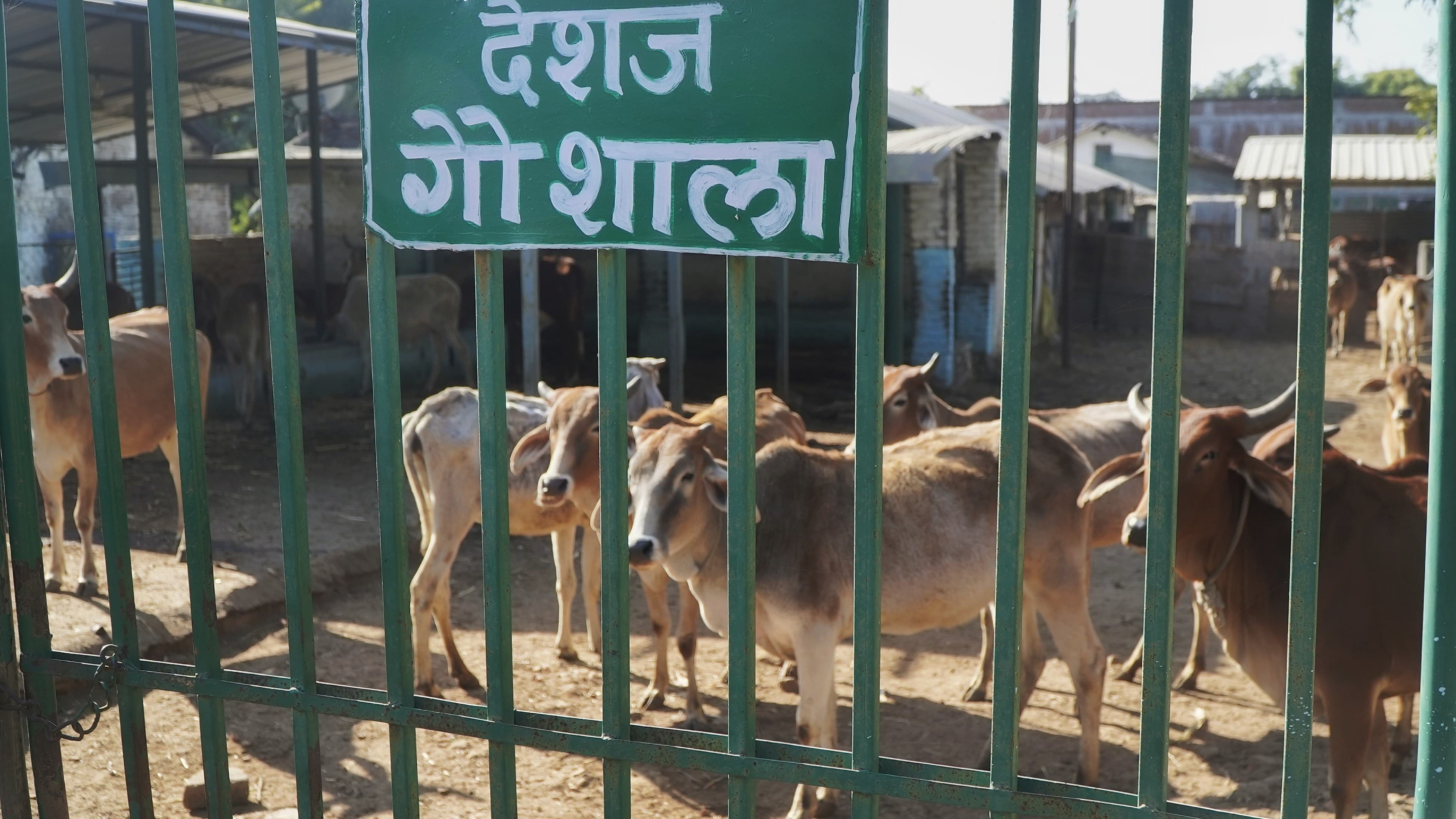 Loading...
Loading...
 Loading...
Loading...

The Ashram has successfully implemented a sustainable waste management system that transforms raw cattle manure into renewable energy and organic fertilizers. This innovative approach not only addresses waste disposal but also contributes to environmental sustainability and agricultural productivity.

Biogas Production from Cattle Manure
At the core of this system is a biogas unit that converts raw manure from the cattle house into biogas, a renewable energy source. The anaerobic digestion process takes place in a sealed environment where microorganisms break down the organic matter, producing methane and other gases. This biogas can be utilized for cooking and heating, significantly reducing reliance on fossil fuels and contributing to energy savings for the community.
Benefits of Biogas
⦁ Renewable Energy Source: Biogas production from cattle manure offers a sustainable alternative to traditional energy sources, helping to mitigate greenhouse gas emissions associated with manure decomposition. ⦁ Nutrient-Rich Byproduct: The digestion process results in digestate, which is a nutrient-rich slurry that can be used as an organic fertilizer, enhancing soil fertility and promoting healthy crop growth
Integration with Vermicomposting
Following the biogas production, the byproduct is utilized as slurry in a vermicomposting unit. This integration allows for the efficient recycling of nutrients back into the soil, creating high-quality compost that supports sustainable agriculture practices. The compost produced is rich in essential nutrients, promoting plant health and productivity.
Plant Growth Promoters
The Ashram also produces natural plant growth promoters, such as Matkha Khad and Amrut Jal, using cow dung and urine combined with other organic materials.
Matkha Khad
⦁ Ingredients: Cow dung, cow urine, jaggery (dried molasses), and water. ⦁ Preparation: These ingredients are mixed in specific proportions and stored in a clay pot (matkha) for one week. The resulting mixture is diluted with water before application. ⦁ Application: Used as a natural fertilizer to enhance plant growth.
Amrut Jal
⦁ Ingredients: Similar to Matkha Khad but includes ripe fruits like guava. ⦁ Preparation: The mixture is stirred daily for four days, allowing beneficial microbes to develop. ⦁ Results: This growth promoter has shown remarkable effects on various crops, including lychee, guava, aloe vera, tomatoes, onions, basil, and radish. Users have reported visible improvements in plant health within a week of application.
Conclusion
Through the establishment of these interconnected facilities—biogas production, vermicomposting, and natural fertilizers—the Ashram has created a comprehensive system that not only provides renewable energy but also enhances agricultural productivity. This model serves as an exemplary approach to sustainable farming practices, demonstrating how waste can be transformed into valuable resources for both energy and soil health.